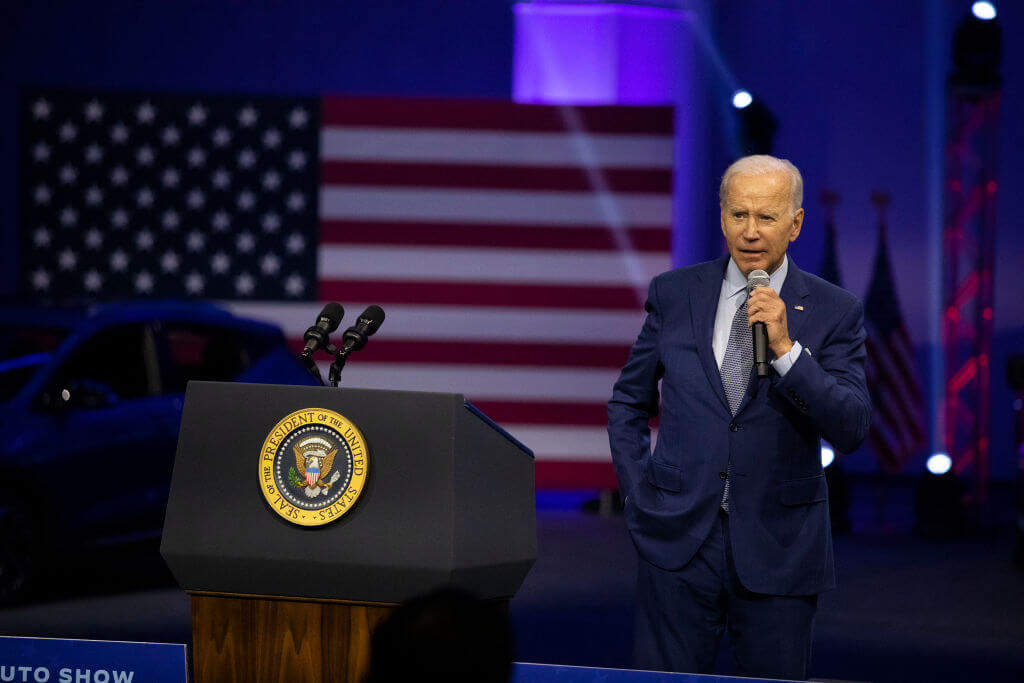Two decades after the second intifada, what have we learned?

Israeli troops run as clashes erupt outside the Al-Aqsa mosque compound in Jerusalem’s Old City 28 September 2000. Image by Awad Awad/Getty Images
(Haaretz) — The 20th anniversary of the outbreak of the second intifada, marked on September 29, the day after Yom Kippur, took place during a period that somewhat resembles the days of the exploding buses. The current terrible stretch, too, is characterized by a general malaise, great personal concerns and questions about when everything will be over.
A lot, of course, is different; most of the people dying today are older (and children hardly ever), whereas suicide bombers don’t discriminate among age groups and segments of society.
My five years of intensively covering the intifada, from Ariel Sharon’s visit to the Temple Mount to the Gaza disengagement — the practical end of that period, and one of its key results — leads to a key conclusion: The intifada reshaped Israel’s political map.
The years of the suicide attacks left deep psychological and political vestiges among Israelis, amid a long collective repression. Only a few books and documentaries have discussed these dramatic years.
The intifada barely features in action movies either, but its effects are obvious. The intifada left behind great anxiety about personal security, something reflected in every general election.
One could argue that here lies the secret of Benjamin Netanyahu and the right wing’s prolonged success. The Oslo Accords, which were foiled for a host of reasons, have been depicted as a failure that must not be repeated.
The prevailing narrative is that whenever Israel withdraws from land, either unilaterally or as part of an agreement, the territory evacuated becomes a launching pad for more attacks (the West Bank cities under Oslo, the withdrawal from southern Lebanon and the Gaza pullout). At least until Netanyahu’s corruption indictments, personal and family security have been a main factor in determining how people vote.
The left had no real response to the scars left by the suicide bombings. Over the years of relative calm except for the occasional offensive in Gaza, Netanyahu managed to brand himself the great defender of Israelis (so he said in interviews on how he wanted to go down in history). Hatred and fear of “the Arabs” peaked during this period of attacks and explain a raft of long-range phenomena, from a majority of ultra-Orthodox voters identifying with the right to the rise of violent far-right groups such as La Familia.
Moreover, beyond the ideological differences that blocked a peace agreement with the Palestinians during the intifada (the future of Jerusalem, borders, settlements and refugees) the basic issue remained: a significant lack of trust on both sides, both among the politicians and the voters. Some issues may have been overcome, but the mutual fears that were cemented by the intifada remain 15 years later.
A video of Sharon from 2005 has been circulating on social media: The then-prime minister attacks Netanyahu, then a cabinet member. Beyond the enmity between the two, Sharon says you need “nerves of steel and rationality” to be a leader.
Sharon was also under a cloud of corruption suspicions, and his son Omri even went to prison over an issue in which Sharon was also mired. But you can’t ignore that Sharon navigated Israeli policy at the time, for better and worse.
He made all the critical decisions: to operate in the Palestinian inner cities and refugee camps, and to stop the terror machine in the West Bank — the height of this effort was Operation Defensive Shield in March 2002. He severed contacts with Palestinian President Yasser Arafat (and decided against assassinating him after long indecision). He got the separation barrier started; finally, came the disengagement.
Debates still rage about many of Sharon’s decisions, but he was definitely a leader with nerves of steel who shaped the contours of the conflict. Sharon didn’t change his opinion every week under the sway of public or political pressure. Defensive Shield and the operations that followed reduced the terrorism to a tolerable level.
The boycott of Arafat also swayed the U.S. administration under George W. Bush and led to the rise of a more moderate Palestinian leadership after Arafat died in 2004. The separation barrier, though Sharon insisted on moving it east at the expense of Palestinian land, left the Green Line as a basis for negotiation.
The disengagement was a historic step that, despite the rise of Hamas and the operations that followed in Gaza, reduced the space for Israeli-Palestinian friction. The right wing’s claim that the Gaza settlements could have been left thriving ignores what went on in the territory before the withdrawal.
Terrorism can be confronted. In the first years after Oslo and at the start of the second intifada, the left would often argue that the Israeli struggle against terrorism was destined to fail because the Palestinians were waging a war for freedom. But the Palestinians’ waging of a struggle without limits — against civilians as well, through the indiscriminate use of suicide bombers on both sides of the Green Line — led to an extraordinary consensus among Israelis on the tough response needed.
In the words of then-military chief Shaul Mofaz, the intifada was a “war on our homes.” The army and the Shin Bet security service used brutal methods, including assassinations and collective punishment. Innocent Palestinian civilians were killed, though for the most part unintentionally. These measures left scars on both sides, and on the generation of Israeli soldiers just after the healing from the wounds of Lebanon. But in the end, they got the Palestinians to rethink their steps.
Arafat’s heir, Mahmoud Abbas, didn’t use terrorism, nor did he justify it, as did his predecessor, the Nobel Peace Prize laureate. Gradually, Palestinian public support for suicide bombings diminished, whether due to the price paid in the punishment by Israel or the tough reactions in the West, especially after 9/11 and the subsequent attacks in European cities. Hamas and Palestinian Islamic Jihad didn’t officially say they would abandon this path, but starting in 2006, the use of suicide bombers declined to a minimum.
The Palestinian issue isn’t going anywhere. Israel’s relative success in fighting terrorism didn’t resolve the Palestinian conflict. Ehud Barak, who with the intifada’s outbreak lost his chance to survive as prime minister, said publicly in October 2000 that there was “no partner” on the Palestinian side after the failure of the Camp David Summit and the fresh violence.
This month, Netanyahu celebrated the signing of accords with two Arab countries, the United Arab Emirates and Bahrain, despite the frozen Palestinian channel.
But actually, the current period of distance from the Palestinians shows two opposite things. First, in the West Bank, the Palestinian Authority has been a silent partner for security arrangements for nearly 15 years. Proof is the absence of flare-ups in the West Bank during the Gaza offensives of 2008-09, 2012 and 2014, despite their high casualty tolls.
Even when a mini-intifada erupted — the knifings and car-rammings of 2015 — the PA security apparatus helped subdue that wave. In the Strip, Yahya Sinwar seems to be concentrating on easing Gazans’ problems. Sinwar, the Hamas leader in the enclave, was released in the Gilad Shalit prisoner swap nearly a decade ago.
On the two Palestinian fronts, each all but isolated from the other, resistance to Israel hasn’t disappeared. On both fronts, despite the disadvantages of the PA and Hamas, Israel has possible partners to achieve tacit long-range understandings, while the chances of achieving permanent agreements seem at a low point.























